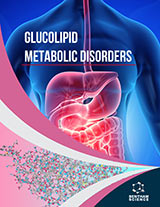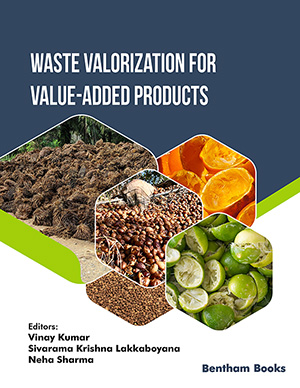Abstract
Concerning the past few years in terms of health and nature, the globe has witnessed an upsurge in the use of nutraceuticals and nutritional and natural products in therapeutics. The major reason for this step is the conventional pharmacological treatment using synthetic drugs that do not meet the status of health and therapeutic requirements for various pathological conditions. Nutraceuticals promise prominent health and therapeutic benefits with no adverse or side effects, providing extra health benefits besides their action in any defined pathological condition. Nutraceuticals are extensive biological therapies that include herbs, vitamins, fatty acids, prebiotics, and probiotics used to promote and maintain health to prevent and cure pathological conditions, malignant processes, syndromes, and symptoms. Nutraceuticals have multidirectional therapeutic benefits and are claimed to be effective products in aiding human health. The addition of omega-3 for the treatment of mental and mood disorders was found to have safer, more valuable, and better therapeutic results in comparison to the use of synthetic drugs. Omega-3 is available in the regular diet through soybeans, walnuts, codfish, and salmon fish, and its constituents have been found to play a promising role in brain development, including brain aging and neurodegenerative disorders, in the pathology of mental and mood disorders, and treatment of the same. Supplementation with Omega-3 PUFA provides a promising effect in better brain development, treatment, prevention and cure of mental and mood disorders. This review endeavours to display and assert the clinical relevance of omega-3 PUFA in brain development, pathology, and treatment of mental and mood disorders.
Keywords: Nutraceuticals, Brain, Omega-3 PUFA, Mental and mood disorders, Brain aging, Neurodegenerative.
[http://dx.doi.org/10.20959/wjpps20178-9825]
[http://dx.doi.org/10.5897/AJFS2015.1402]
[http://dx.doi.org/10.1007/BF02872389] [PMID: 23105426]
[http://dx.doi.org/10.1108/00346650510625557]
[http://dx.doi.org/10.1016/j.nut.2005.07.017] [PMID: 16500549]
[http://dx.doi.org/10.1046/j.1463-1318.2003.00444.x] [PMID: 12780904]
[http://dx.doi.org/10.1054/clnu.2001.0527] [PMID: 12056790]
[http://dx.doi.org/10.5005/jp/books/12412]
[http://dx.doi.org/10.1079/BJN2002677] [PMID: 12495454]
[http://dx.doi.org/10.1016/S0260-8774(02)00247-9]
[http://dx.doi.org/10.1194/jlr.R600019-JLR200] [PMID: 16738356]
[http://dx.doi.org/10.1176/ajp.2006.163.6.969] [PMID: 16741195]
[http://dx.doi.org/10.1089/jmf.2004.7.387] [PMID: 15671680]
[http://dx.doi.org/10.1007/s10163-014-0231-4]
[http://dx.doi.org/10.1016/S0308-8146(99)00266-6]
[http://dx.doi.org/10.1007/s10126-004-0149-2] [PMID: 15759086]
[http://dx.doi.org/10.1023/A:1008896500986]
[http://dx.doi.org/10.1007/BF02540987]
[http://dx.doi.org/10.1007/BF02541694]
[http://dx.doi.org/10.1111/j.1745-4522.2000.tb00160.x]
[http://dx.doi.org/10.1007/s11746-000-0033-5]
[http://dx.doi.org/10.1007/s11746-001-0288-x]
[http://dx.doi.org/10.2331/suisan.59.1429]
[http://dx.doi.org/10.1016/0021-9673(94)01233-5]
[http://dx.doi.org/10.1016/j.jacc.2011.06.063] [PMID: 22051327]
[http://dx.doi.org/10.1038/nrd1469] [PMID: 15286736]
[PMID: 2144420]
[http://dx.doi.org/10.1016/j.plipres.2006.01.003] [PMID: 16516300]
[http://dx.doi.org/10.1002/jnr.10817] [PMID: 14689452]
[http://dx.doi.org/10.1007/s11745-000-0501-6] [PMID: 10695931]
[http://dx.doi.org/10.1016/S0009-3084(03)00101-4] [PMID: 14580707]
[http://dx.doi.org/10.1016/j.plefa.2006.07.006] [PMID: 16973342]
[http://dx.doi.org/10.1002/glia.22288] [PMID: 22228580]
[http://dx.doi.org/10.1093/ajcn/82.2.281] [PMID: 16087970]
[http://dx.doi.org/10.1002/glia.20275] [PMID: 16206168]
[http://dx.doi.org/10.1002/jnr.10121] [PMID: 11754075]
[http://dx.doi.org/10.1016/j.neurobiolaging.2006.01.002] [PMID: 16500747]
[http://dx.doi.org/10.1111/j.1471-4159.2006.04371.x] [PMID: 17257165]
[http://dx.doi.org/10.1016/j.neuint.2005.12.001] [PMID: 16473439]
[http://dx.doi.org/10.1016/j.neuint.2007.03.012] [PMID: 17517448]
[http://dx.doi.org/10.1016/j.neuint.2009.02.018] [PMID: 19428799]
[http://dx.doi.org/10.1016/j.freeradbiomed.2009.10.048] [PMID: 19878718]
[http://dx.doi.org/10.1152/physrev.00049.2005] [PMID: 16816144]
[http://dx.doi.org/10.1111/j.1365-2125.2012.04374.x] [PMID: 22765297]
[http://dx.doi.org/10.1016/j.ejphar.2011.05.085] [PMID: 21816146]
[http://dx.doi.org/10.1111/jnc.12392] [PMID: 23919613]
[http://dx.doi.org/10.1097/MOL.0b013e3283616364] [PMID: 23594712]
[http://dx.doi.org/10.1074/jbc.M803625200] [PMID: 18490445]
[http://dx.doi.org/10.1016/j.plefa.2012.05.006] [PMID: 22727983]
[http://dx.doi.org/10.1097/MCO.0000000000000141] [PMID: 25501348]
[http://dx.doi.org/10.1016/j.plefa.2014.01.002] [PMID: 24485516]
[http://dx.doi.org/10.1046/j.1471-4159.2002.00932.x] [PMID: 12068080]
[http://dx.doi.org/10.1093/jn/135.9.2241] [PMID: 16140905]
[http://dx.doi.org/10.1016/j.plipres.2009.04.001] [PMID: 19362576]
[http://dx.doi.org/10.1007/s00401-013-1226-2] [PMID: 24356982]
[http://dx.doi.org/10.1007/s11357-012-9453-3] [PMID: 22791395]
[http://dx.doi.org/10.1016/j.neurobiolaging.2011.12.014] [PMID: 22305186]
[http://dx.doi.org/10.1136/bmj.325.7370.932] [PMID: 12399342]
[http://dx.doi.org/10.1016/S0193-953X(05)70197-0] [PMID: 11147247]
[http://dx.doi.org/10.1152/ajpcell.1987.253.5.C672] [PMID: 3688215]
[http://dx.doi.org/10.1016/S0140-6736(05)79168-6] [PMID: 9643729]
[http://dx.doi.org/10.1016/j.neurobiolaging.2005.09.013] [PMID: 16226347]
[http://dx.doi.org/10.1016/j.plefa.2004.08.002] [PMID: 15589396]
[http://dx.doi.org/10.1038/oby.2004.234] [PMID: 15601986]
[http://dx.doi.org/10.1385/JMN:16:2-3:263] [PMID: 11478381]
[http://dx.doi.org/10.1056/NEJMoa011613] [PMID: 11844848]
[http://dx.doi.org/10.1093/oxfordjournals.aje.a009029] [PMID: 8982020]
[http://dx.doi.org/10.1007/s11745-000-0646-3] [PMID: 11201991]
[http://dx.doi.org/10.3945/an.111.000893] [PMID: 22332096]
[http://dx.doi.org/10.3109/10715769509147537] [PMID: 7704186]
[http://dx.doi.org/10.2337/diacare.18.8.1160] [PMID: 7587852]
[http://dx.doi.org/10.1016/j.pnpbp.2012.10.017] [PMID: 23123357]
[http://dx.doi.org/10.3164/jcbn.12-98] [PMID: 23874068]
[http://dx.doi.org/10.1161/CIR.0000000000000709] [PMID: 31422671]
[http://dx.doi.org/10.1186/s12944-017-0415-8] [PMID: 28137294]
[http://dx.doi.org/10.1186/s13058-015-0571-6] [PMID: 25936773]
[http://dx.doi.org/10.1007/s40256-016-0170-7] [PMID: 27138439]
[http://dx.doi.org/10.1007/s10555-015-9572-2] [PMID: 26227583]
[http://dx.doi.org/10.1097/AOG.0000000000000668] [PMID: 25730231]
[http://dx.doi.org/10.1016/j.fct.2018.07.029] [PMID: 30026089]






























